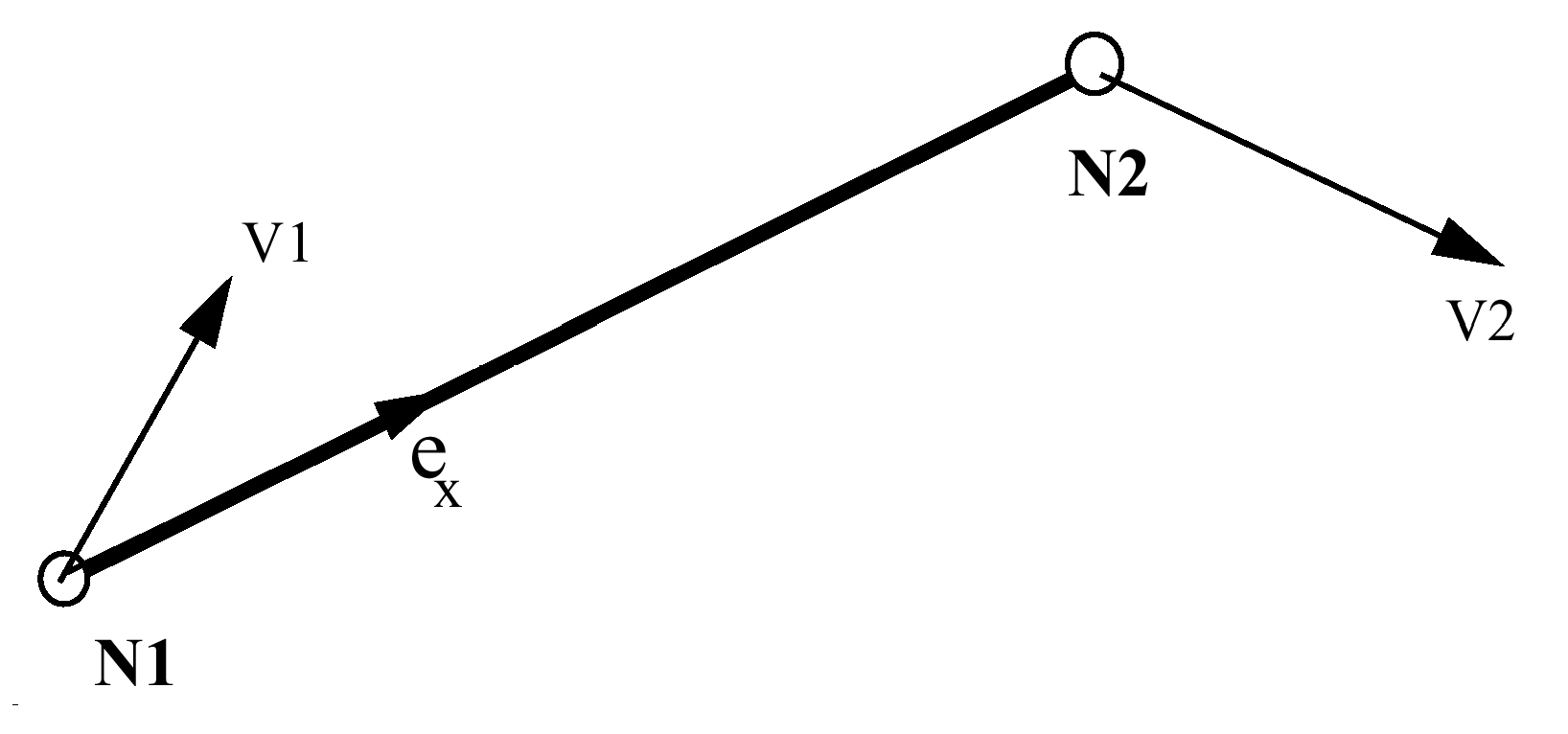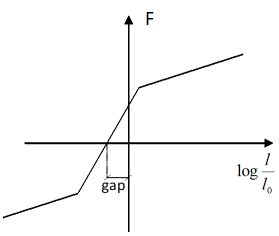Truss Elements (TYPE2)

Property Input
The only property required by a truss element is the cross-sectional area. This value will change as the element is deformed. The cross sectional area is computed using:
- Poisson's ratio defined in the material law
Stability
Determining the stability of truss elements is very simple. The characteristic length is defined as the length of the element, that is, the distance between N1 and N2 nodes.
- Current truss length
- Sound speed
Rigid Body Motion

Strain
The strain rate, as shown in Figure 2, is defined as:
Material Type
A truss element may only be assigned two types of material properties. These are TYPE1 and TYPE2, elastic and elasto-plastic properties, respectively.
Force Calculation
The calculation of forces in a truss element is performed by explicit time integration:
A generalized force-strain graph can be seen in Figure 3. The force rate under elastic deformation is given by:
- Elastic modulus
- Cross-sectional area
In the plastic region, the force rate is given by:
- Gradient of the material curve at the deformation point


In a general case, it is possible to introduce a gap distance in the truss definition. If gap is not null, the truss is activated when the length of the element is equal to the initial length minus the gap value. This results a force-strain curve shown in Figure 3(b).